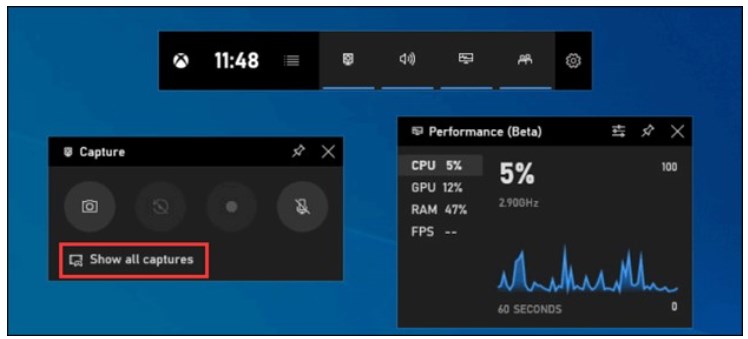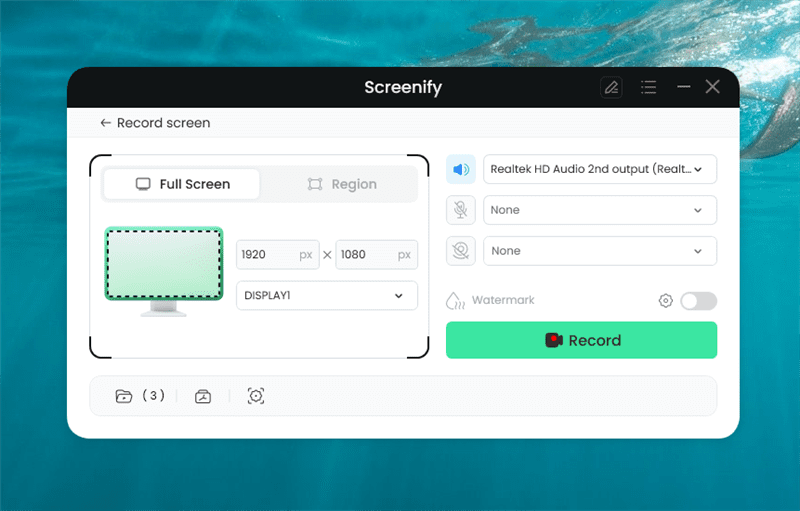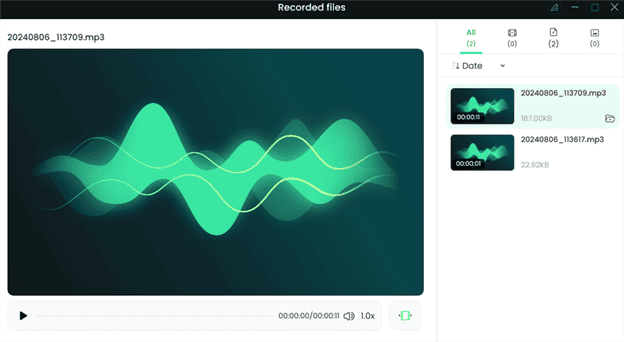Can Websites Detect If I Record Screen From Them?
This article explores whether websites can detect when you record the screen or take a screenshot. It also explains the legality of recording websites and what can be recorded and provides steps for using Screenify to record or screenshot a website. In this simple guide, learn about privacy, content protection, and can websites detect screen recording or not in detail.
Can websites detect screen recordings or screenshots? This question is quite popular with people, especially when they need to save or share something from a website. In this article, we will know and understand if websites can identify whether or not you are recording or taking screenshots. We’ll also discuss legal issues involved in screen recording, what kinds of websites can be recorded, and introduce a simple tool, Screenify. Knowledge of these facts will assist and enable you to function effectively with websites and be conscious of content privacy. So, let’s discuss the details!
Also Read: How to record a protected video
Is It Legal to Record Websites?
Recording websites can be legal or illegal, depending on the situation and location. Generally, recording public information on websites for personal use is legal. Nevertheless, recording may be prohibited by law or the website’s terms of service if it includes copyrighted content, sensitive data, or requires user authorization. Before recording, ensure you’re not breaking any laws or policies on the internet.

record video from website
What Websites Can be Recorded?
Websites that provide public, non-copyrighted content can be recorded for personal use. This includes blogs, tutorials, or educational sites that allow users to share or save their information. However, websites with copyrighted material, such as streaming services (Netflix, Hulu) or websites with private data, often restrict recording. Always check the website’s terms and conditions to ensure recording is allowed and you’re not violating copyright or privacy laws.
Can Websites Detect Screen Recording?
Wondering if websites can detect when you’re screen recording? Most of the time, the answer is no—websites are typically unable to recognize screen recording activities. However, this may vary depending on your operating system, browser, and website’s technology. Even though most websites don’t keep track of screen recordings, it’s still important to abide by usage guidelines and copyright laws.
Screenify is a highly flexible screen-capturing program, and the good news is that it is open-source for both Windows and Mac. It provides immensely useful features in recording, making the process as easy and professional as possible. A feature that users will find especially advantageous is the absence of a time limit for recording: Screenify does not restrict the length of the recorded content.
It can record many different file formats and resolutions comprising 4K at 60FPS, making the videos clear. In addition, there are multiple recording modes and the option to set a text watermark on recordings. Additionally, its simple cropping tool makes editing videos fast and hassle-free. Whether you’re creating tutorials, capturing gameplay, or saving important moments, Screenify provides all the essential features to meet your screen recording needs.
Key Features:
- Users can record for unlimited time without any restrictions on the length of their videos.
- You can easily set customizable text watermarks for branding or ownership of your recordings.
- Users can record custom areas, windows, or screens using various recording options.
- It supports several file formats and resolutions, including 4K and 60 frames per second, for excellent recording output.
- Editing and cutting your recordings for a finished output is simple using simple cropping options.
Now, let’s explore the simple steps to use Screenify for screen recording any website:
Record Screen
Step 1. Install Screenify on your computer by downloading and following the installation instructions.
Step 2. Open Screenify and choose the “Record Screen” option from the main interface.

Screenify Main Screen
Step 3. Before starting the capture, adjust your recording settings, including audio preferences and video quality.
Step 4. Access the site you want to record. In Screenify, select whether to record the full screen or a specific area.
Step 5. Define the recording area by choosing “Full Screen” for a complete capture or manually select a region of the website. Click “Record” to start.

Screenify Full Screen Record
Step 6. Wait for the 3-second countdown to finish, which gives you time to set up for the recording. Begin recording the website content and add any notes or annotations as needed.
Step 7. When you’re done recording, click “Stop.” You can then review and manage your saved video.

Preview and Export Recorded Files
Record Audio from the Website
Want to record audio alongside the screen? No worries! Screenify lets you record system sound and audio from the microphone simultaneously. Here’s how to do it:
Step 1. Launch Screenify on your PC. From the homepage, choose the “Record Audio” mode.

Choose Record Audio Mode
Step 2. Select the audio source and click on “More Settings.”
Step 3. Configure the settings such as sound level or check “Reduce Microphone Noise.” Hit the save button.
Step 4. Press the “Record” button to initiate recording. A 3-second timer will run on the screen, and recording will start afterward. Hit the “Stop” button once you’re done.
Can Websites Detect Screenshots?
Most websites cannot detect when you take a screenshot. Unlike screen recording, taking a screenshot is generally not tracked by websites. Yet, if a screenshot contains sensitive or copyrighted content, certain websites might try to detect or prohibit it using scripts or security measures.
Conclusion
In conclusion, it’s important to be aware of privacy rules and copyright laws, even though most websites cannot detect whether you record your screen or take a screenshot. Websites typically do not track these actions, but exceptions may exist based on specific technologies or security measures. For those looking to capture website content effectively, Screenify is an excellent choice. It is a flexible tool for personal and business use because it has many functions for screen recording and taking screenshots. Try Screenify for seamless and high-quality captures of your online activities.

Joy Taylor


Senior writer of the iMobie team as well as an Apple fan, love to help more users solve various types of iOS & Android-related issues.
Screenify
AnyEnhancer
FocuSee
Vozard
AnyMiro
AnyMirror






